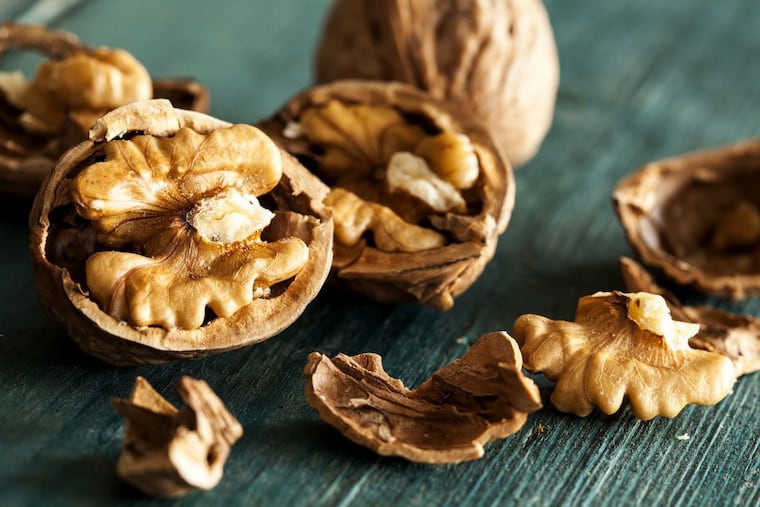Walnuts may lower blood pressure, risk of heart disease, Penn State study finds
“It seems like there’s a little something extra in walnuts that are beneficial ... that you don’t get in the fatty acids alone.”

Kale has earned its place as a dietary rock star. Blueberries, açaí, flaxseed, quinoa — they all pack a big nutritional punch. So what’s next on the superfood horizon?
Well, if you’re concerned about heart disease, you might want to consider walnuts.
A new study by Pennsylvania State University researchers and funded by the California Walnut Commission found that eating walnuts, when combined with a diet low in saturated fats, may help lower blood pressure in people who are at risk for cardiovascular disease.
In fact, study participants who ate walnuts as a substitute for saturated fat — i.e. undesirable fats — showed better results than other participants who were fed diets with that also included generally healthy fatty acids, but no actual walnuts.
“When participants ate whole walnuts, they saw greater benefits than when they consumed a diet with a similar fatty acid profile as walnuts without eating the nut itself,” said Penn State nutrition professor Penny Kris-Etherton. “So it seems like there’s a little something extra in walnuts that are beneficial — maybe their bioactive compounds, maybe the fiber, maybe something else — that you don’t get in the fatty acids alone.”
The study, published recently in the Journal of the American Heart Association, involved 45 participants between ages 30 and 65 who were overweight or obese. Before the study began, they were put on a two-week run-in diet that included 12 percent of their calories coming from saturated fat, which reflects the average American diet.
The participants then went onto three study diets in random order, all of which had less saturated fat than the run-in diet. They followed each diet for six weeks.
One of the diets included walnuts — whole, unsalted, and not roasted. Another of the diets had the same amount of alpha-linolenic acid (ALA) — a plant-based omega-3 that can have a positive effect on blood pressure — as would be found in the walnuts, but included no actual nuts. The third diet substituted oleic acid — another fatty acid — for the same amount of ALA found in walnuts, but also no real nuts.
Although all three diets had a positive cardiovascular effect on the participants, lowering their cholesterol levels, the people who ate the whole walnuts saw the greatest benefits, including a statistically significant lowering of central diastolic blood pressure (the bottom number of a blood pressure reading).
So how many walnuts did the study participants eat to get those healthy effects?
Alyssa Tindall, study coauthor and a new Ph.D. graduate in nutrition, said they consumed between 2 to 3.5 ounces a day — about 18 percent of their total calorie intake.
For those enthusiasts who might jump to the conclusion that more must be better, take a breath.
Like many nuts, walnuts are calorically dense, Tindall noted. The old axiom about too much of a good thing holds true here.
The key, she said, is to think in terms of incorporating walnuts into your diet as a replacement for saturated fat.
“We certainly don’t want to be adding them to an unhealthy diet,” Tindall said.